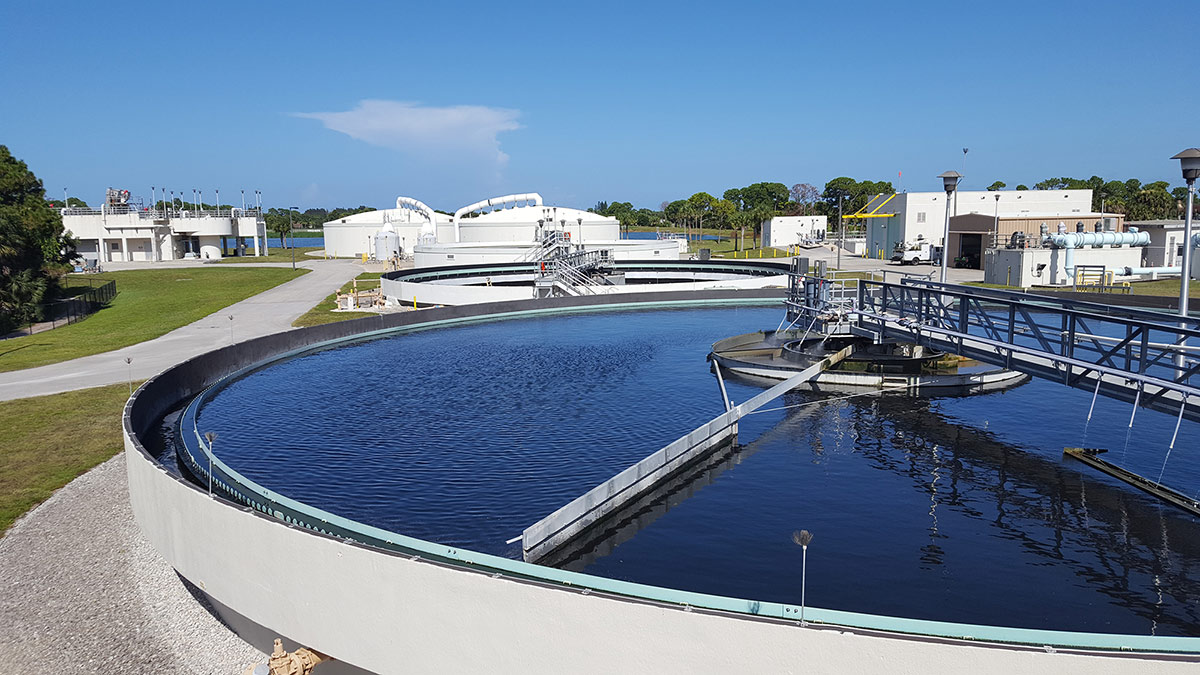How Wastewater Treatment Will Enhance Water Reuse Capabilities
Wiki Article
Recognizing Wastewater Therapy Processes and Their Ecological Influence
The details of wastewater treatment procedures play a crucial role in mitigating ecological challenges connected with water pollution. Each phase, from preliminary to advanced treatments, is made to attend to details contaminants, ultimately securing both public health and aquatic ecosystems.Review of Wastewater Therapy
Exactly how is wastewater changed into a safe source for the atmosphere? Wastewater therapy is a crucial procedure developed to eliminate pollutants from utilized water, thus securing public wellness and securing communities. This procedure begins with the collection of wastewater from household, commercial, and commercial sources, which is then guided to therapy centers.At these centers, different physical, chemical, and biological approaches are used to deal with the wastewater. Subsequently, biological therapies, such as triggered sludge processes, use microbes to damage down natural matter.
The dealt with effluent can be safely released into all-natural water bodies or reused for watering and commercial functions, advertising source preservation. In addition, the treatment process produces biosolids, which can be repurposed as fertilizers or dirt modifications, even more enhancing sustainability.
Stages of Therapy Processes
The wastewater therapy procedure commonly contains three primary phases: initial, primary, and secondary therapy. Each phase serves an unique role in minimizing the toxin lots and making certain the effluent meets ecological requirements prior to discharge.
The key therapy phase concentrates on the physical separation of put on hold solids from the wastewater. Via sedimentation, heavier bits settle at the bottom of sedimentation containers, developing sludge, while lighter materials, such as oils and greases, float to the surface and are skimmed. This process dramatically decreases the natural and not natural load in the wastewater.
Second therapy is an organic procedure focused on additional minimizing the concentration of natural issue. Different methods, including triggered sludge systems and flowing filters, use microorganisms to metabolize natural contaminants. This stage is crucial for accomplishing the required biochemical oxygen need (BODY) reduction, ultimately bring about cleaner effluent all set for discharge or more therapy. Each phase is essential in guarding environmental and public health.

Advanced Treatment Technologies
Adhering to the additional treatment procedures, progressed treatment technologies play an important function in further improving the quality of dealt with wastewater. These technologies are designed to remove residual pollutants that are not properly eliminated throughout main and additional therapies, ensuring the effluent satisfies stringent regulative criteria.Amongst the extensively used advanced therapy methods are membrane filtration, reverse osmosis, and advanced oxidation processes. Membrane purification, consisting of microfiltration and ultrafiltration, works in dividing visit this page fine fragments, virus, and colloids from the water (Wastewater). Reverse osmosis utilizes semi-permeable membranes to get rid of dissolved solids, leading to high-quality water ideal for numerous applications
Advanced oxidation procedures (AOPs) use strong oxidants to degrade natural contaminants, including drugs and individual treatment items that are immune to standard therapy. These methods improve the biodegradability of complex substances, promoting their removal.
An additional considerable modern technology is the usage of organic nutrient elimination procedures, which especially target nitrogen and phosphorus, protecting against eutrophication in obtaining water bodies. On the whole, sophisticated therapy modern technologies are necessary for achieving greater degrees of purification, advertising water reuse, and securing public health while resolving the obstacles connected with wastewater administration.
Environmental Benefits of Treatment
Numerous environmental advantages develop from reliable wastewater therapy processes that add to ecosystem health and wellness and sustainability. Primarily, these processes substantially lower the launch of hazardous toxins right into all-natural water bodies, which aids maintain water environments. By eliminating pollutants such as heavy metals, nutrients, and virus, treated wastewater minimizes the risk of waterborne diseases and advertises biodiversity in marine environments.In addition, wastewater treatment centers often use sophisticated modern technologies that allow water recycling and reuse. This technique not just saves fresh water sources however also decreases the need on all-natural water products. Improved nutrient removal from wastewater can additionally avoid eutrophication, a process that results in algal blossoms and subsequent oxygen exhaustion in marine systems.
Additionally, effective therapy procedures can decrease greenhouse gas exhausts, specifically methane and laughing gas, which are often launched during neglected wastewater disintegration. By capturing and making use of biogas from anaerobic digesters, facilities can transform waste into renewable resource, thereby contributing to a decrease in nonrenewable fuel source dependence.
Obstacles and Future Patterns
While the ecological benefits of wastewater treatment are clear, several difficulties persist that impede ideal end results in this area. One significant problem is aging infrastructure, which often causes inadequacies and raised functional prices - Wastewater. Several treatment visit our website plants were developed decades earlier, and their capacities do not line up with contemporary needs, that include more stringent regulative requirements and greater quantities of wastewater as a result of urbanization
Looking ahead, there is a growing emphasis on source recovery and circular economic situation principles within wastewater treatment. Innovations such as anaerobic food digestion, which can create biogas, and progressed purification innovations are obtaining grip. These approaches not just improve treatment efficiency yet likewise promote sustainability.
Inevitably, resolving these challenges calls for partnership amongst stakeholders, financial investment in modern technology, and a commitment to recurring study. By welcoming these trends, the wastewater therapy industry can progress to fulfill the demands of a transforming environment and culture.
Verdict
In verdict, wastewater treatment processes play an important role in boosting environmental my site top quality and public wellness. The multi-stage treatment framework, coupled with advanced technologies, successfully mitigates pollution and advertises sustainable water monitoring.Report this wiki page